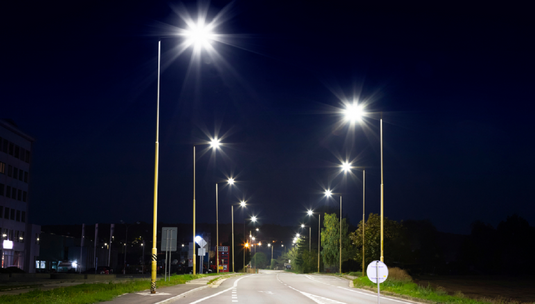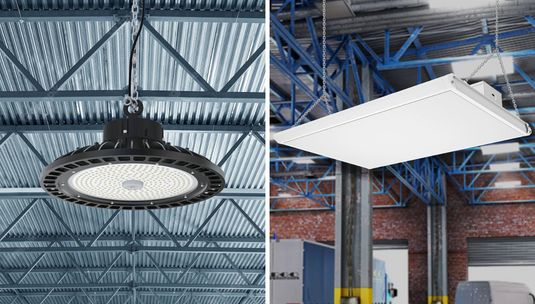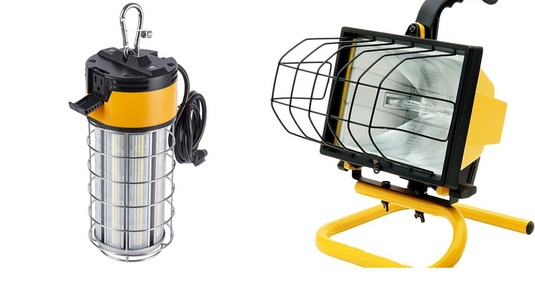Street lights play a crucial role in modern society, providing illumination to roads, pathways, and public spaces during the night. With advancements in lighting technology, LED street lights have gained popularity due to their energy efficiency, longevity, and other benefits. In this article, we will explore the various advantages of LED street lights and why they are becoming the preferred choice for outdoor lighting.
Introduction
Street lights have been an integral part of urban infrastructure for decades. They are installed in cities, towns, and villages to provide visibility, safety, and security during nighttime hours. Traditional street lights have typically used high-pressure sodium lamps or other conventional lighting technologies. However, with the advent of LED technology, there has been a significant shift towards LED street lights due to their numerous benefits.
Importance of Street Lights
Street lights are not just a luxury; they are a necessity for modern society. They play a crucial role in improving the quality of life for people by providing illumination in public spaces, promoting safety and security, and enabling various outdoor activities at night. Street lights also enhance the aesthetics of urban areas, making them more inviting and attractive.
Benefits of LED Street Lights
LED street lights offer several advantages over traditional lighting technologies. Let's take a closer look at some of the key benefits:
Energy Efficiency
LED street lights are highly energy-efficient compared to conventional lighting technologies. They consume significantly less electricity and can result in substantial energy savings. LED street lights use light-emitting diodes (LEDs) as the light source, which convert almost all of the energy into light, minimizing wastage. This makes LED street lights an eco-friendly lighting option that can help reduce electricity consumption and lower energy costs.
Cost Savings
Although LED street lights may have a higher upfront cost compared to traditional street lights, they offer long-term cost savings. The energy efficiency of LED street lights results in reduced electricity bills, leading to lower operational costs over time. Additionally, LED street lights have a longer lifespan compared to conventional lighting technologies, which translates into reduced maintenance and replacement costs. This makes LED street lights a cost-effective lighting solution in the long run.
Longevity
LED street lights are known for their long lifespan, which is significantly higher than traditional lighting technologies. LED street lights can last up to 10 times longer than conventional street lights, reducing the frequency of replacements and maintenance. This not only saves costs but also reduces the inconvenience of frequent replacements, making LED street lights a durable and reliable lighting option.
Environmentally Friendly
LED street lights are environmentally friendly compared to traditional lighting technologies. They do not contain harmful substances such as mercury, which is commonly found in traditional lighting sources like fluorescent lamps. LED street lights also do not emit harmful UV rays, making them safe for the environment and human health. Additionally, LED street lights are recyclable and contribute to reducing electronic waste, making them a sustainable lighting solution.
Enhanced Safety and Security
One of the key benefits of LED street lights is their ability to enhance safety and security in public spaces. Well-lit streets, roads, and pathways can significantly reduce the risk of accidents, improve pedestrian and vehicular visibility, and deter criminal activities. LED street lights provide bright and uniform illumination, ensuring that roads and public spaces are well-lit, making them safer for pedestrians and drivers alike. Well-lit areas also discourage vandalism and other criminal activities, enhancing overall security in the community.
Improved Visibility
LED street lights offer superior visibility compared to traditional lighting technologies. They produce a bright and clear illumination that enhances visibility during nighttime, improving road safety and reducing the risk of accidents. LED street lights also have a high color rendering index (CRI), which means that they render colors more accurately compared to other lighting sources. This is especially important for outdoor areas where color recognition is crucial, such as in parking lots or public spaces.
Reduced Light Pollution
Light pollution is a growing concern in urban areas, where excessive artificial lighting can have negative impacts on the environment and human health. LED street lights are designed to minimize light pollution by directing the light downward and reducing the amount of wasted light that disperses into the sky. This helps to preserve natural darkness, protect wildlife habitats, and reduce the disruption of natural ecosystems. LED street lights also allow for better control of light intensity and direction, which further helps in minimizing light pollution and creating a more sustainable lighting solution.
Maintenance and Durability
LED street lights are known for their low maintenance requirements and high durability. They have a longer lifespan compared to traditional lighting technologies, reducing the frequency of replacements and maintenance. This translates into cost savings and reduced disruption of normal operations. LED street lights are also resistant to shock, vibration, and extreme weather conditions, making them highly durable and reliable in various outdoor environments.
Different Applications of LED Street Lights
LED street lights have a wide range of applications beyond just illuminating roads and public spaces. They are increasingly being used in various outdoor lighting applications, including:
- Parking lots: LED street lights provide bright and uniform illumination for parking lots, ensuring visibility and safety for drivers and pedestrians.
- Parks and recreational areas: LED street lights enhance the safety and aesthetics of parks and recreational areas, making them inviting for evening activities.
- Residential areas: LED street lights are used in residential areas for better visibility and security, creating well-lit and safe neighborhoods.
- Commercial and industrial areas: LED street lights are used in commercial and industrial areas for improved visibility, safety, and security for workers and visitors.
Conclusion
LED street lights offer numerous benefits, including energy efficiency, cost savings, longevity, environmental friendliness, enhanced safety and security, improved visibility, reduced light pollution, and low maintenance requirements. Their versatility and effectiveness in various outdoor lighting applications make them a preferred choice for modern street lighting solutions. As cities and communities continue to prioritize sustainability, safety, and efficiency, LED street lights are likely to become even more widespread in the future.
FAQs
-
Are LED street lights more expensive than traditional street lights? LED street lights may have a higher upfront cost compared to traditional street lights. However, their long-term cost savings due to energy efficiency and reduced maintenance make them a cost-effective choice in the long run.
-
Do LED street lights consume less electricity? Yes, LED street lights are highly energy-efficient and consume significantly less electricity compared to traditional lighting technologies.
-
Are LED street lights environmentally friendly? Yes, LED street lights are environmentally friendly as they do not contain harmful substances like mercury and are recyclable, contributing to reducing electronic waste.
-
Do LED street lights require frequent replacements? No, LED street lights have a longer lifespan compared to traditional lighting technologies, reducing the frequency of replacements and maintenance.
-
Can LED street lights help reduce light pollution? Yes, LED street lights are designed to minimize light pollution by directing the light downward and reducing wasted light that disperses into the sky.




